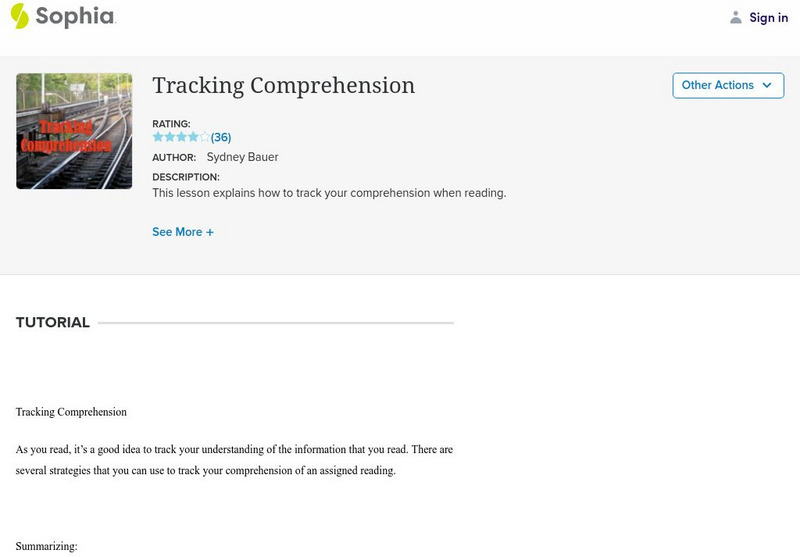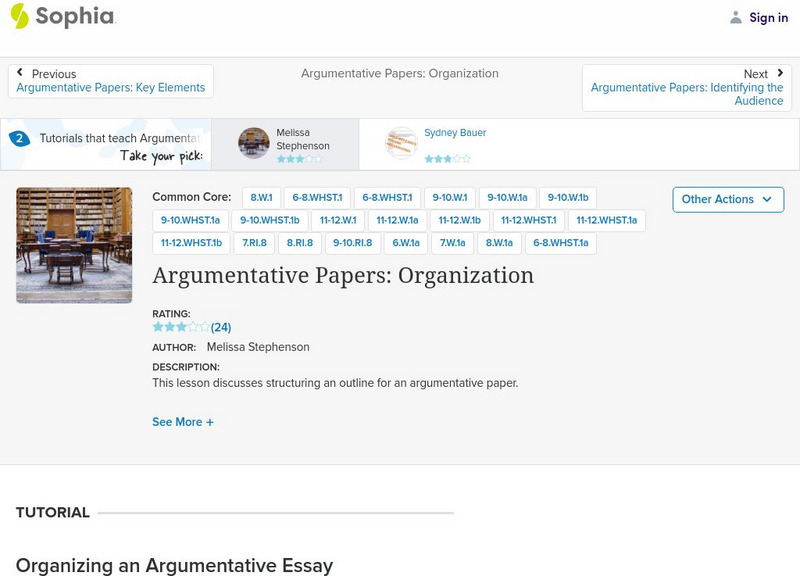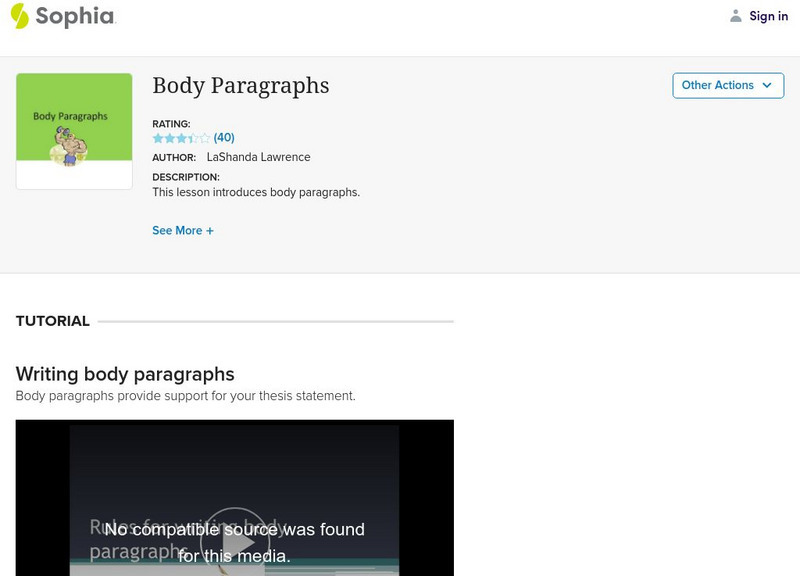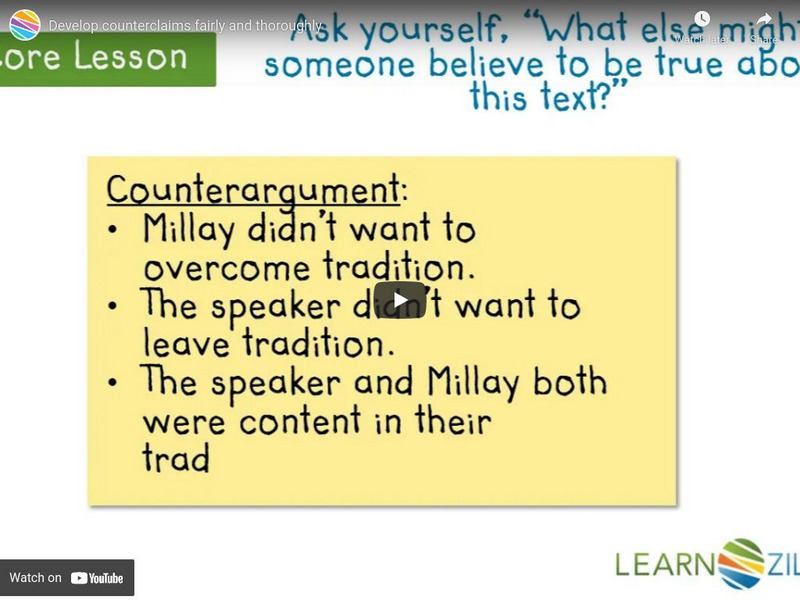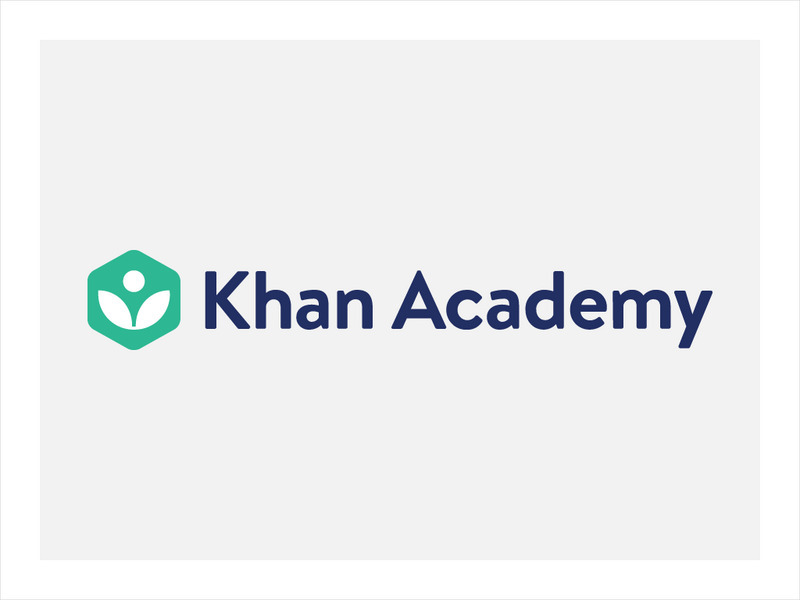Hi, what do you want to do?
Curated OER
Capturing Authentic Narratives
“Authentic narrative is the glue that connects people.” So says the narrator of this short video who models for young journalists how to craft the questions and identify the sources that will yield the information needed to create a...
Sophia Learning
Sophia: Descriptive Papers: The Thesis
This video lesson details how to write a thesis for a descriptive paper including what is required: identifying the subject being described, providing the perspective/stance, and the reasons or point of the description. It also provides...
Sophia Learning
Sophia: How to Read a Writing Assignment
This video lesson focuses on how to read and understand a writing assignment. It begins by defining keywords used in assignments: analyze, compare and contrast, evaluate, describe, and propose. Then using a sample assignment, it...
Sophia Learning
Sophia: Narrative Key Elements
This video lesson focuses on the key elements of writing a narrative: point of view, tone, reflective statement, pacing, emphasis, and cohesion. W.9-10.3,3a, 3b, 3c, 3e Narratives, W.11-12.3,3a, 3b, 3c, 3e Narratives
Sophia Learning
Sophia: Paragraph
This video lesson focuses on the paragraph; it defines paragraph; explains how it transitions from the previous paragraph, develops the new thought of the topic sentence, and transitions to the next paragraph. It uses an example from...
Sophia Learning
Sophia: Writing Effective Body Paragraphs
This screencast focuses on how to write effect body paragraphs including the following: purpose, general outline, background information, topic sentence, multiple pieces of supporting evidence, analysis of the evidence, and conclusion...
Sophia Learning
Sophia: Tracking Comprehension
This lesson focuses on strategies for tracking comprehension while reading. It provides three main strategies: summarizing, chunking, and glossing. It explains each in step-by-step fashion using both text and audio.
Sophia Learning
Sophia: Argumentative Papers: Organization
This lesson focuses on the organization of argumentative papers. It discusses the purpose of argumentative papers and the required parts; then it provides the basic organizational pattern for the paper: introduction with a hook for the...
PBS
Pbs Learning Media: Objectifying the Text: Conversations in Literature
See how effective readers utilize literary elements and allusions to critically analyze a text in this one-hour video Objectifying the Text. A group of nine experienced educators examine the process of envisionment building as they...
Sophia Learning
Sophia: Body Paragraphs
This lesson introduces body paragraphs. [3:41] CCSS.ELA-Literacy.WHST.6-8.2.b
Crash Course
Crash Course Literature #1: How and Why We Read
This seven minute video series of Crash Course Literature uses lively verbal explanations accompanied by entertaining visuals with a host who provides compelling examples of how and why people read.
Leaf Group
Classroom: How to Write a Paragraph
In this video Laura Turner explains how to write a paragraph; like a mini essay it requires a single subject and include an introduction sentence, a body, and a closing sentence. [1:08]
Sophia Learning
Sophia: Clarity
A video lesson explaining the importance of clarity in effective writing and showing some examples of how to make writing more clear. [9:45] W.11-12.4 Clear/Coherent Writing CCSS.ELA-Literacy.WHST.6-8.2.c and CCSS.ELA-Literacy.WHST.6-8.4
Sophia Learning
Sophia: Thesis Statements
This lesson introduces how to write a thesis statement. This tutorial lesson shares a short screencast [04:45] with the lesson's content.
Sophia Learning
Sophia: Analyze the Impact of the Point of View
Notes describing a three-step process to analyze the impact of the point of view on a literary text. Notes can be both read and listened to.
Annenberg Foundation
Annenberg Learner: Conversations in Literature
A series of 8 instructional videos, each about 60 minutes in length, designed to model effective reading habits through envisionment building. Topics include Responding As Readers, Envisioning, Stepping In, Moving Through, Rethinking,...
Imagine Learning Classroom
Learn Zillion: Support Your Claim With Reasons and Evidence From the Text
In this lesson, you will learn how to develop your claim by outlining your essay and making sure each reason has sufficient evidence. [6:27]
Imagine Learning Classroom
Learn Zillion: Develop Counterclaims Fairly and Thoroughly
In this lesson, you will learn how to develop a counterclaim fairly and thoroughly by supplying the most relevant evidence and considering readers' knowledge and biases. [5:47]
Imagine Learning Classroom
Learn Zillion: Provide an Effective Conclusion
In this lesson, you will learn how to provide an effective conclusion by analyzing your thesis and body paragraphs. [8:19]
Sophia Learning
Sophia: Writing Effective Conclusions
This video lesson focuses on writing conclusions, i.e., what makes an effective conclusion, what to include in a conclusion, and how to write one. [7:44] W.9-10.1e, W.9-10.3e Conclusion, W.11-12.1e Argument Conclusion, W.11-12.2f...
EngageNY
Engage Ny: Determine Author's Purpose and Analyze Use of Rhetoric
Students participate in a Socratic seminar and demonstrate how to determine an author's point of view or purpose in a text and analyze how an author uses rhetoric to advance that point of view or purpose.
PBS
Academic Vocabulary in the Common Core: High School Social Studies
This video [5:06] provides research related to the Common Core approach to vocabulary, footage of classroom teachers engaging students in vocabulary instruction, and sample vocabulary assessments.
Khan Academy
Khan Academy: The Sat Reading Test: What to Expect
This video [2:08] is an overview of the SAT Reading Test. It explains that the passages include one literary text from a famed author, informational texts from science, history, etc. The sections include Information and Ideas, Rhetoric,...
Sophia Learning
Sophia: Narratives
This tutorial uses text and audio to introduce narrative writing. [2:03]











